by Alessandra Ressa
Photos and videos courtesy of Andrea Tamaro
Imagine a lunar landscape made up of plateau after plateau of crumbling white rock, peppered with deep holes. Some are filled with perennial snow, others dark and uninviting, with a freezing, sinister wind hitting your face when you bend down, trying to see what’s below. You throw a rock into the black, vertical hole and count the seconds it takes to hit the bottom, but you hear nothing… Welcome to Mount Canin, a cave explorer’s paradise, where some of the world’s deepest caves are hidden.
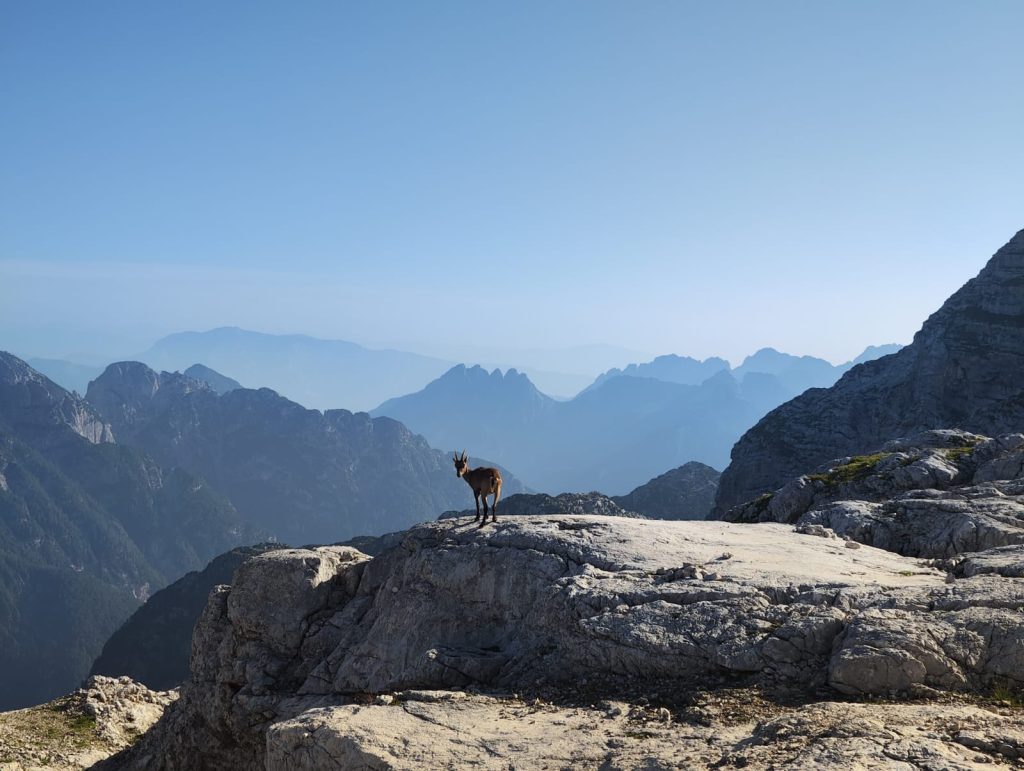
Located in the Julian Alps, halfway between Italy and Slovenia, this unique glacier-capped mountain dwarfs human chronicles when compared with its geological history. What we see today is the result of millions of years of elemental forces. Its unique rock, made of Dolomite and limestone, has been eroded and shaped by water to form deep abysses—some reaching over 1,500 meters in depth—along with hundreds of caves and underground mazes. Its hidden treasures are still under exploration or remain unknown.
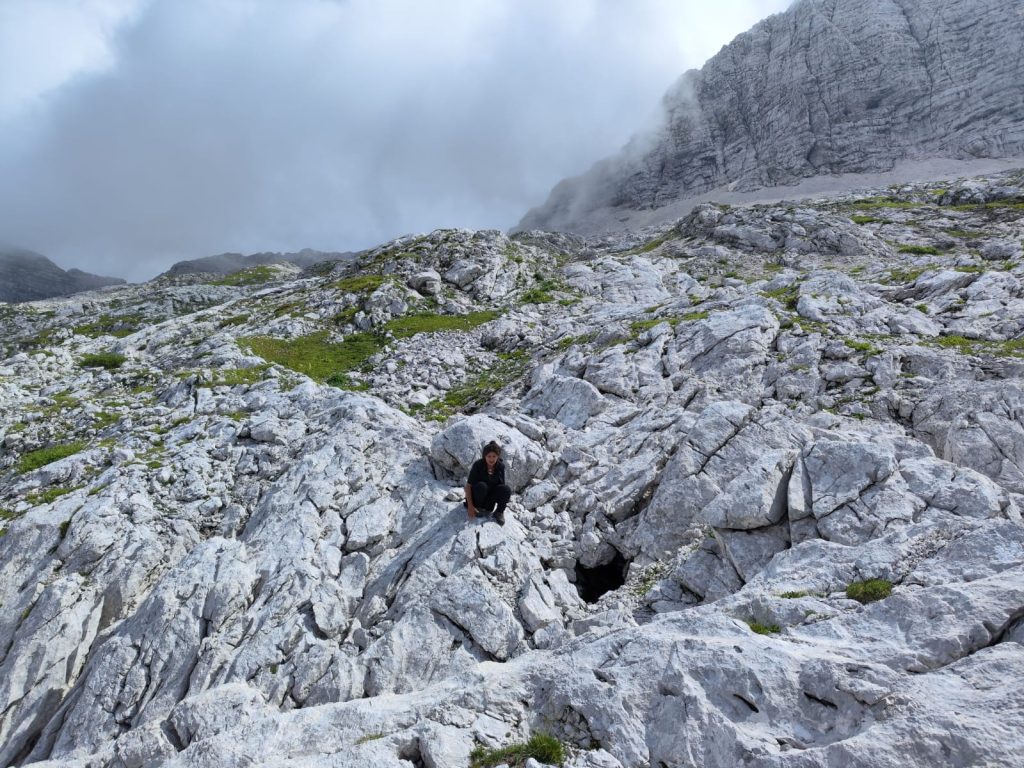
Since the 1970s, when speleology techniques evolved—replacing long and heavy metal ladders with ropes as the sole means of descent and ascent—Mount Canin has become the ultimate destination for cave explorers. Every summer, teams of brave cavers set up camp on its vast plateau, continuing the exploration of partially known cavities and investigating new holes. They hope to discover new abysses and set depth records through narrow, deep passages.
One such team involved in these yearly explorations belongs to Trieste’s CAT, Club Alpinistico Triestino. Established in 1945, CAT began investigating the area in August 1974.
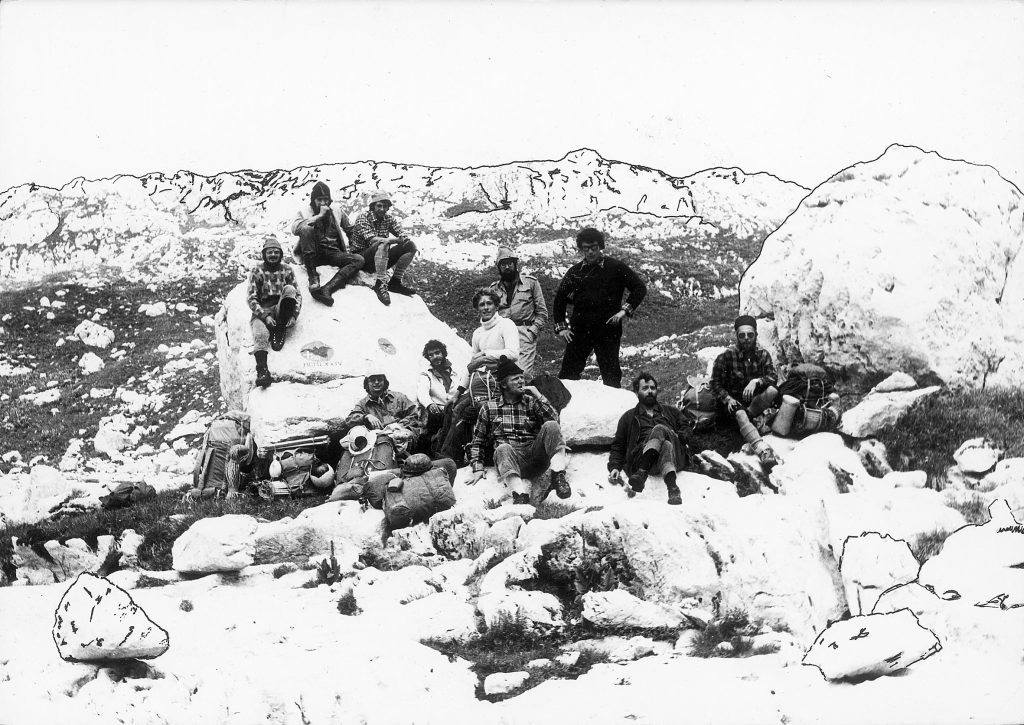
Since then, over 150 CAT speleologists have explored different areas of the massive mountain. In exactly 50 years, they have discovered and explored nearly 300 caves. Some of the most significant include the Giovanni Mornig Abyss, which is 4,430 meters long and 441 meters deep, the Giglio Abyss, and the most recent find, the G1, named after its Triestino discoverer Giuliano Zivoli.
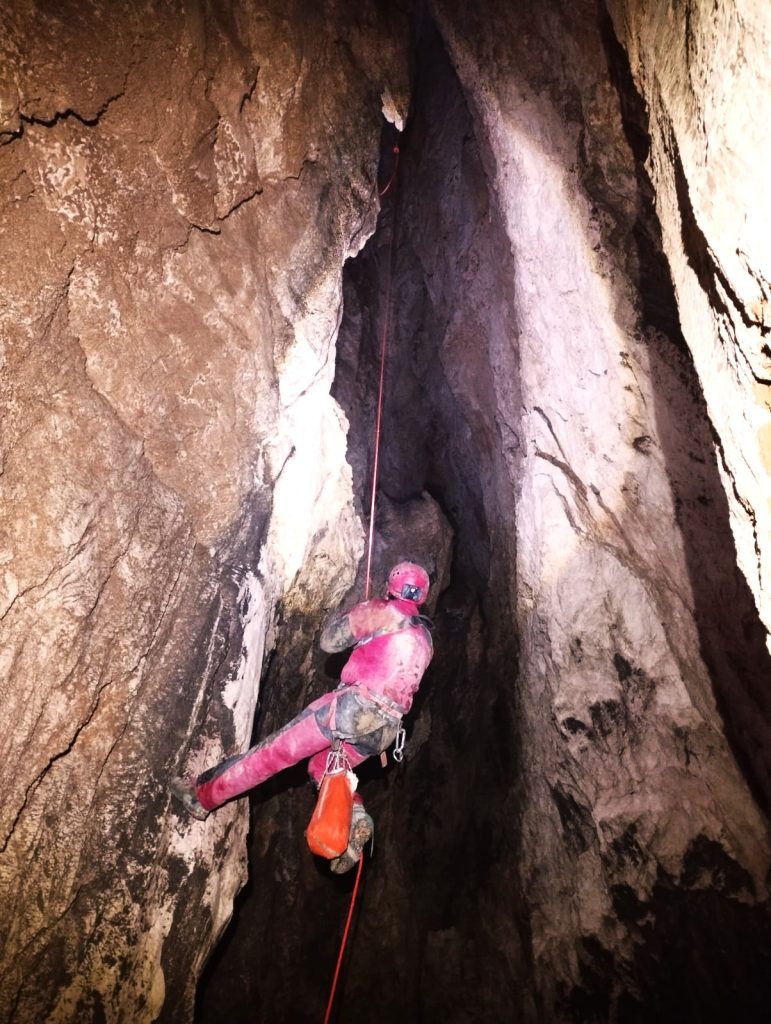
The G1 has now been explored to a depth of 250 meters, but its discoverer is confident that the quest has just begun. Next summer, the hard work will resume, and with the aid of helicopters to transport heavy loads, the camp—currently being dismantled due to incoming heavy snow—will be re-established. So far, the deepest cave discovered on Mount Canin is over 1,500 meters deep, and the longest is estimated to be approximately 100 kilometers.
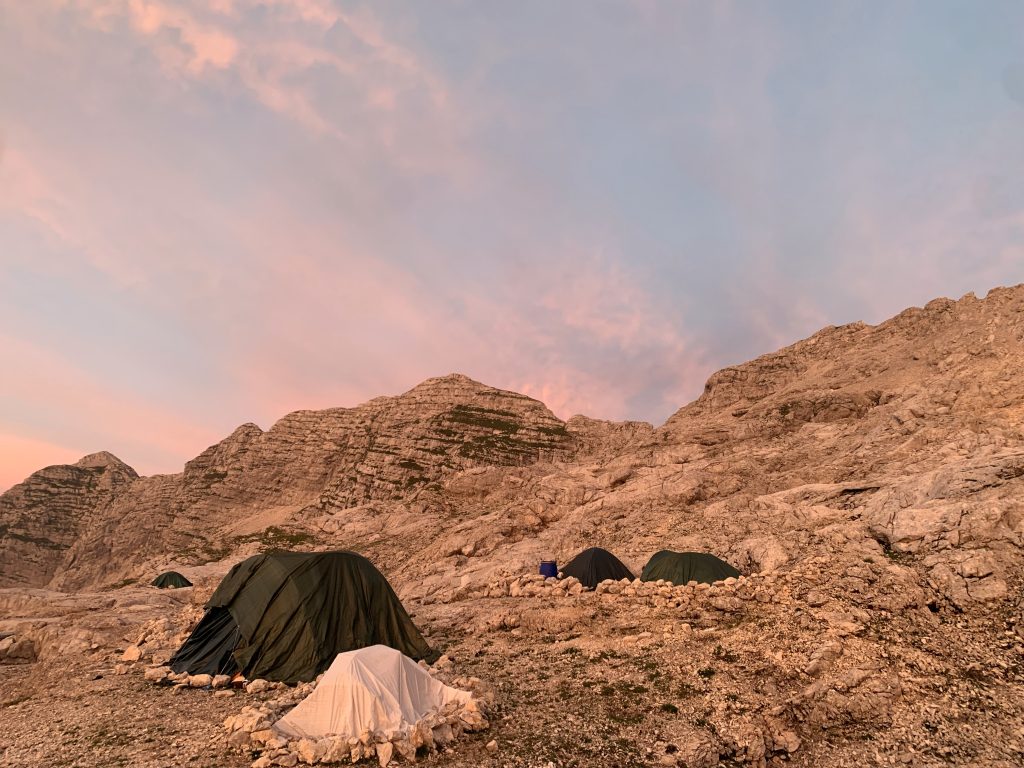
I visited the camp this past August while the explorers were taking a break in Trieste. I didn’t want to interfere with their work or be another mouth to feed. It took two rides on ropeways filled with merry hikers and a long hike uphill, burdened by an incredibly heavy backpack, to reach the camp. Luckily, I stopped halfway at the legendary Rifugio Gilberti for strudel and cappuccino. Once I reached the top, the view was breathtaking, and the silence was deafening. The tents scattered across the plateau stood ghostly as curious and not at all shy wild ibexes moved about the site. Just as I set up my tent and lit the little gas stove for dinner, the sky turned red with the most beautiful sunset I had ever witnessed.
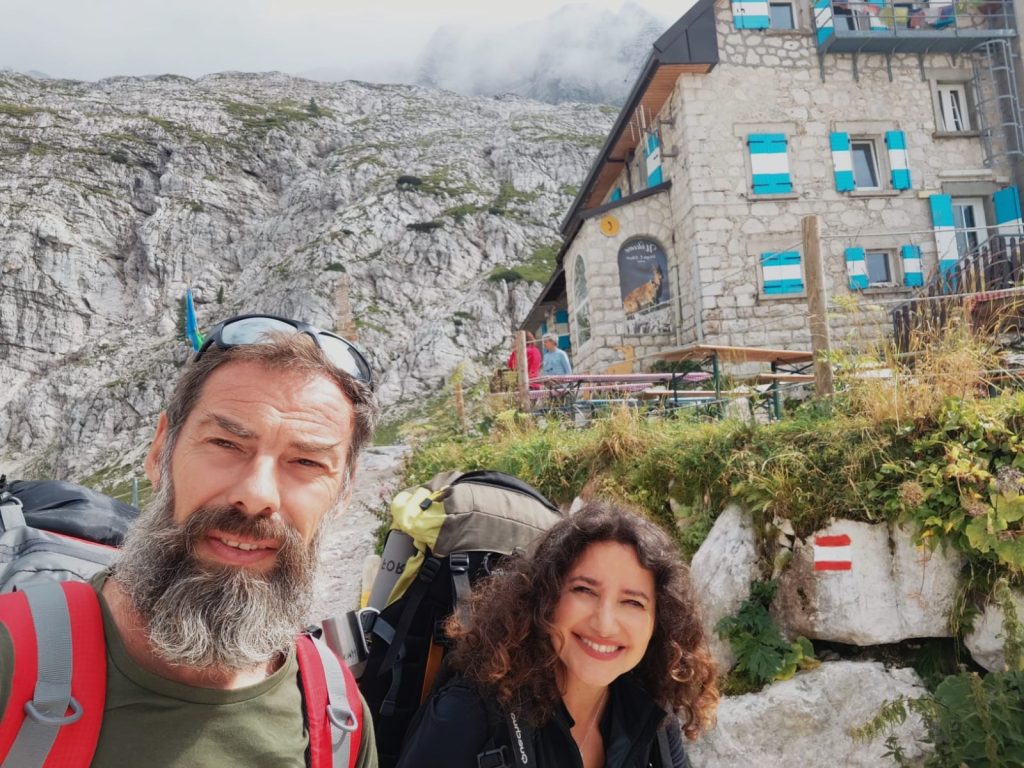
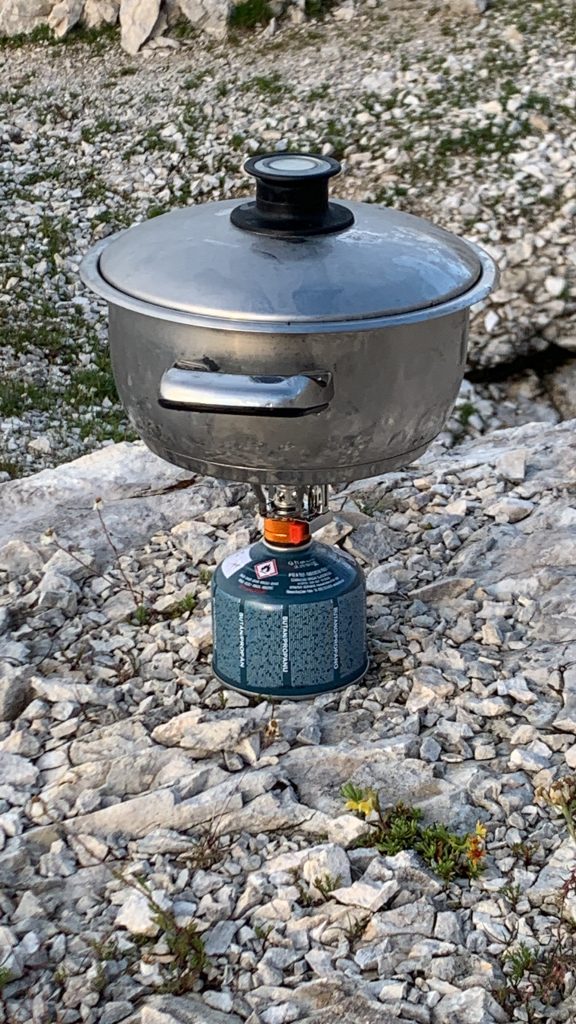
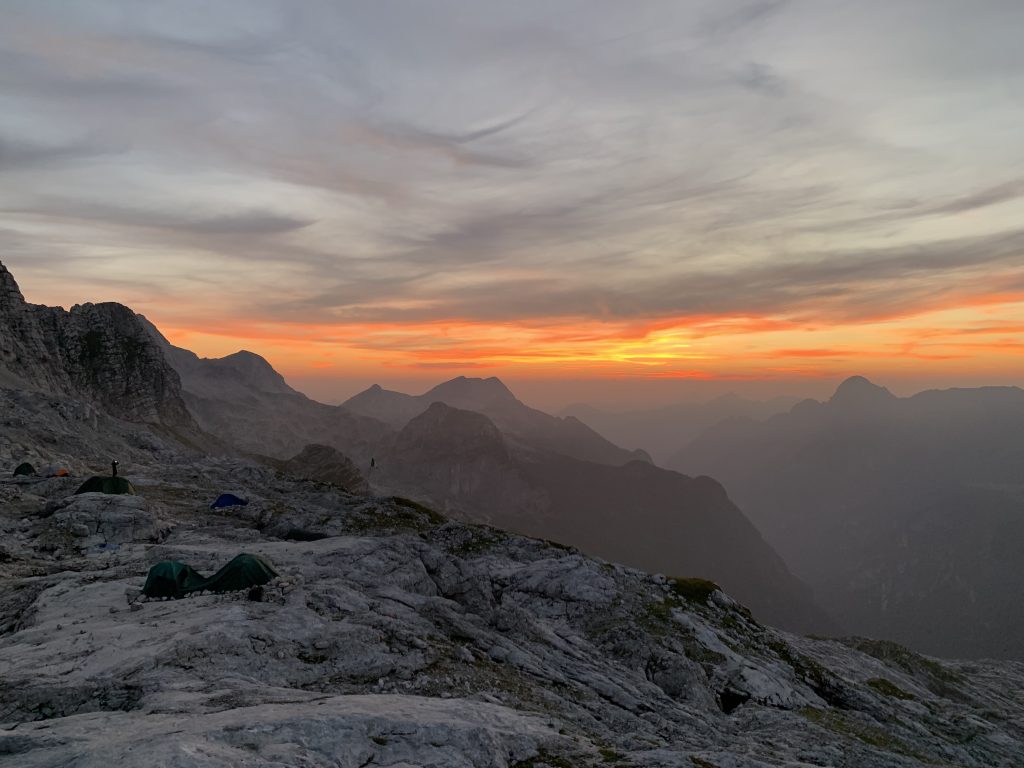
A hot and sunny day quickly transformed into a freezing, starry night. It was so cold that wearing all the clothes I had packed (including triple socks and double thermals) and lying motionless in my sleeping bag inside the tent still didn’t prevent me from shivering all night. Outside, it turned so damp that my boots were soaked in seconds. As I tried to settle in for the night, a bright light engulfed my tent, making a flashlight unnecessary. I stepped out to see a full moon rising from behind the crests—a breathtaking sight. Reflecting off the white rock, the mountain shone so brightly that you could see for miles, as if it were daylight. After a couple of hot chocolate cups and a few twists and turns in my sleeping bag, it was time to get up and get dry. The ibexes were still there, while a handful of mountain goats stood watch on a spiky peak. One night on Mount Canin gave me the thrill of a lifetime.

You can hike on Mount Canin in summer or winter (with proper snow equipment) by taking the ropeway from Sella Nevea. You can also ski in winter. Alternatively, you can climb all the way from Chiusaforte along the Val Raccolana (I recommend doing this in summer). There is a second ropeway that runs from Rifugio Gilberti further up, but it has a tricky schedule and offers a limited number of rides. The Slovenian side of Mount Canin can also be reached from Bovec.
This spectacular place, however, is best experienced in summer when you can marvel at the incredible resilience of thousands of colorful wildflowers growing out of the dry, rocky surface.





























